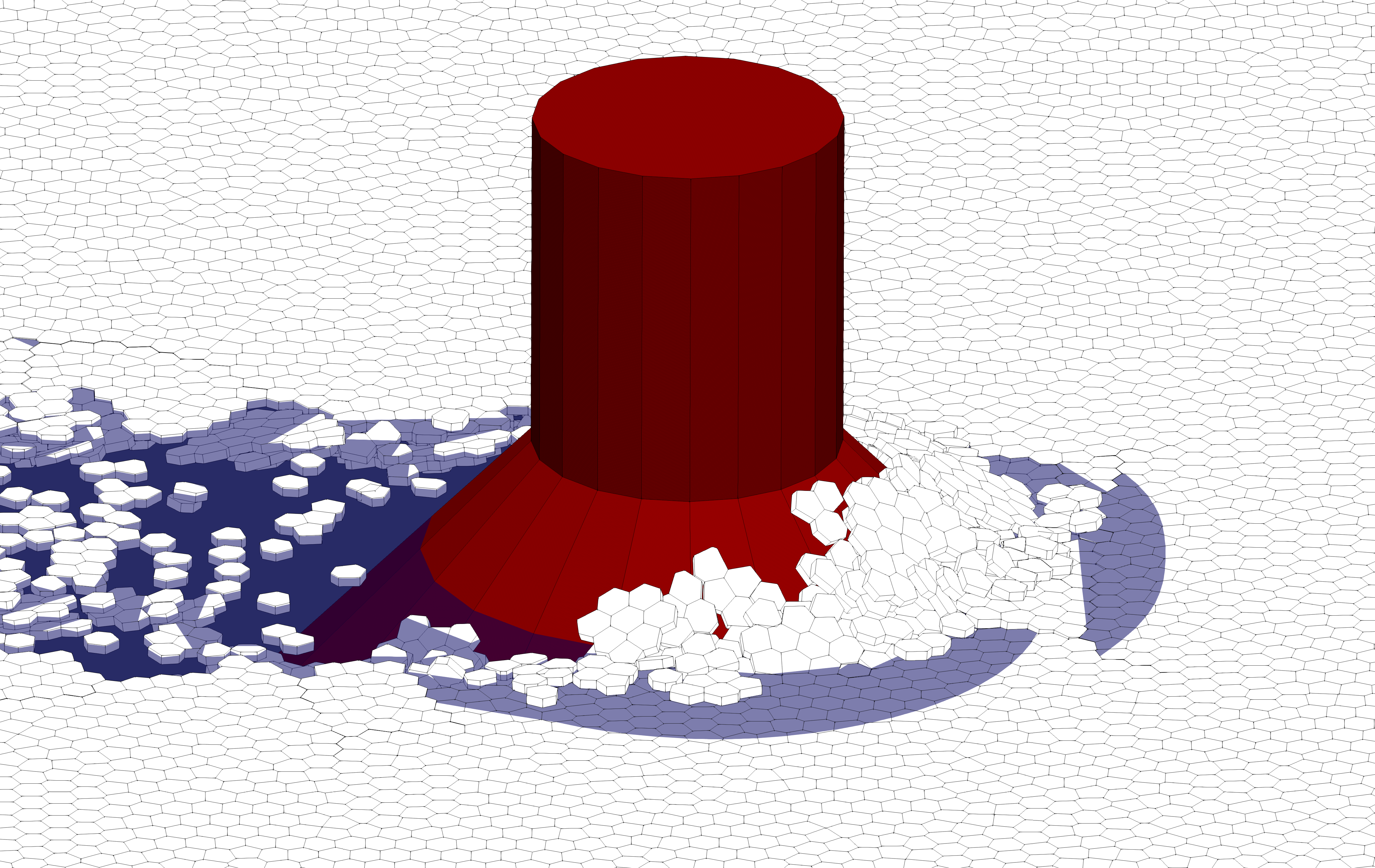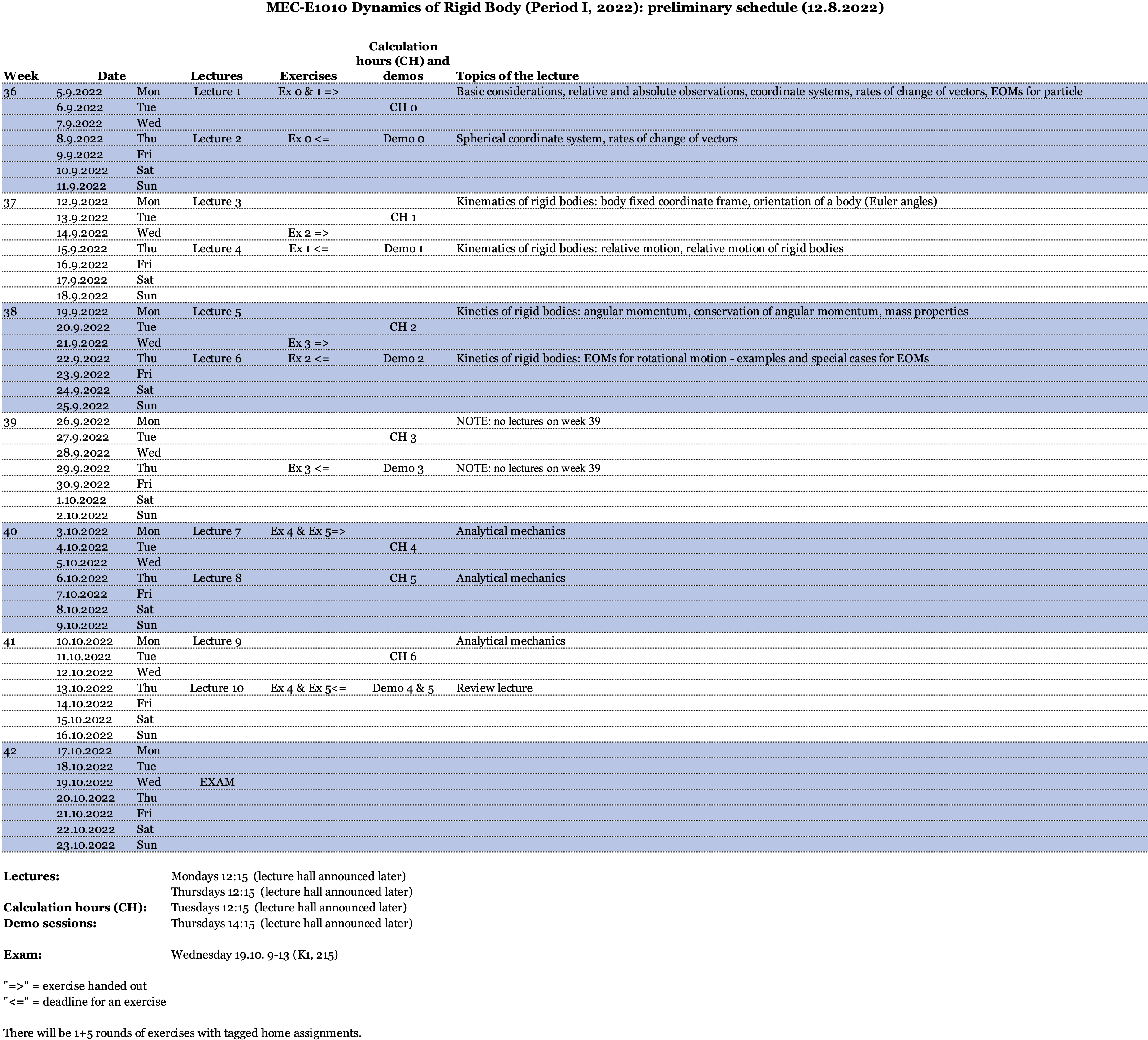MEC-E1010 - Dynamics of Rigid Body, Lecture, 5.9.2022-19.10.2022
This course space end date is set to 19.10.2022 Search Courses: MEC-E1010
Topic outline
-
Please enroll to the course as soon as possible! You can find the pre-assignments from the "exercises" section. Solving them will give you extra points for the course. Also after enrolling, I recommend you watch the "general information" online lecture you can find under section "materials".
 Combined finite-discrete element simulation of ice sheet failing against an offshore wind turbine foundation by Polojärvi (2022) (https://www.sciencedirect.com/science/article/pii/S0045794922000888). The motion of the ice particles is calculated by using three dimensional rigid body dynamics.This course enables the student to describe particle and rigid body motion in three dimensions and how to use Lagrangian formalism to derive equations of motion for a rigid body. You will learn to:
Combined finite-discrete element simulation of ice sheet failing against an offshore wind turbine foundation by Polojärvi (2022) (https://www.sciencedirect.com/science/article/pii/S0045794922000888). The motion of the ice particles is calculated by using three dimensional rigid body dynamics.This course enables the student to describe particle and rigid body motion in three dimensions and how to use Lagrangian formalism to derive equations of motion for a rigid body. You will learn to:- Employ the most generally used coordinate systems in derivation of equations of motion for a particle.
- Express the quantities required to describe the three-dimensional motion of a rigid body in most commonly used coordinate systems.
- Deduce the equations of motion for a rigid body starting from the definitions of its mass properties and in most commonly used coordinate systems.
- Apply Lagrange's
formalism and the quantities related to it in derivation of equations of
conservative and non-conservative systems.
Course includes lectures and independent exercises. Assessment and grading are based on the exercises and the exam.
